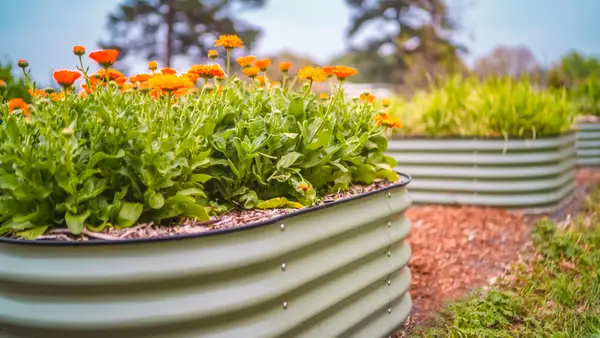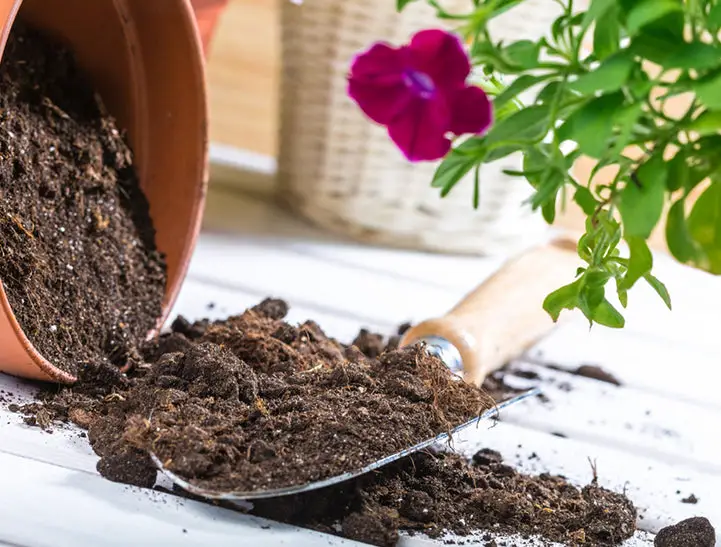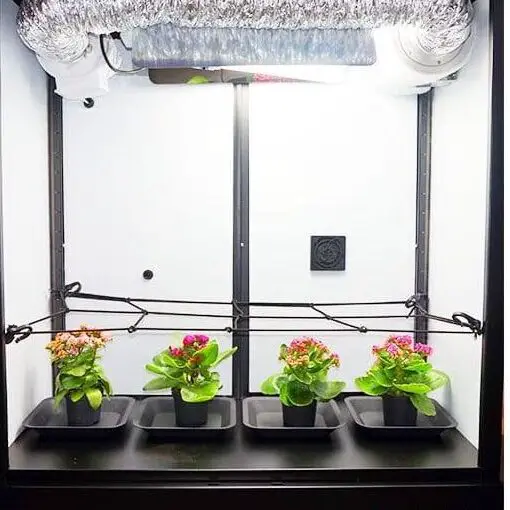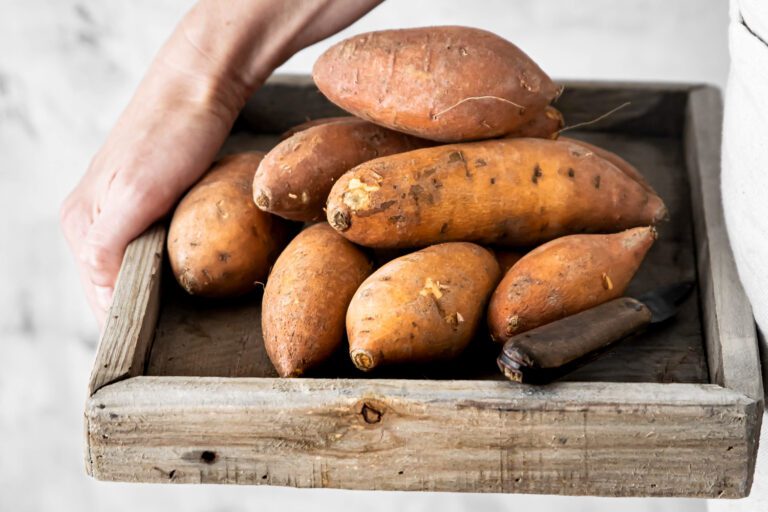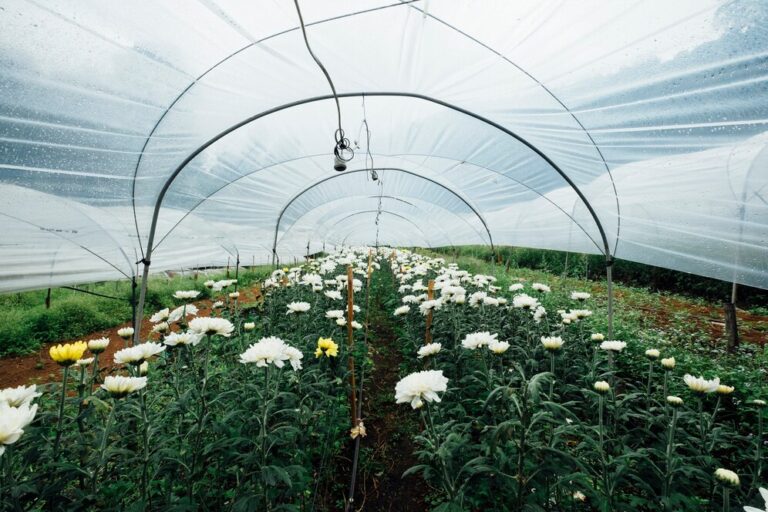Coco vs Soil: Which Growing Medium is Better for Your Cannabis?
Table of Contents
Understanding the Importance of Choosing the Right Growing Medium
When it comes to growing plants, whether it be flowers, vegetables, or even cannabis, choosing the right growing medium is crucial. The growing medium is the material in which your plants will grow their roots and obtain nutrients. It provides support, water, and oxygen to the plants, allowing them to thrive and reach their full potential.
But why is it so important to choose the right growing medium? Well, different plants have different needs, and the growing medium plays a significant role in meeting those needs. It affects the availability of water and nutrients to the plants, as well as their overall growth and yield. The wrong growing medium can lead to stunted growth, nutrient deficiencies, root rot, and even plant death. Therefore, selecting the appropriate growing medium is essential for the success of your garden or cannabis cultivation.
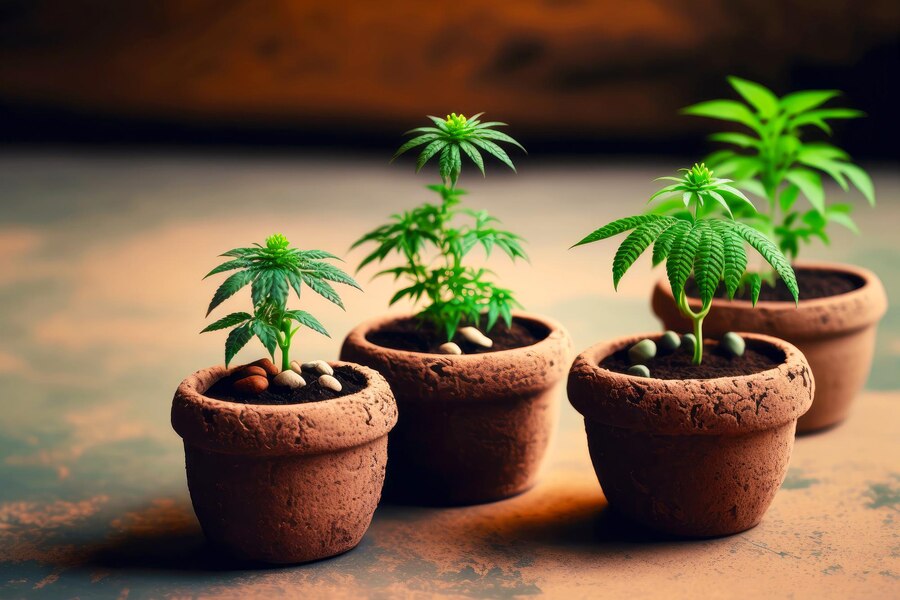
In the following sections, we will explore the different types of growing mediums available, such as coco and soil, and their pros and cons. We will also delve into more specific aspects, such as nutrient retention, water retention, pH levels, drainage, aeration, environmental impact, cost factors, ease of use, and the role of microorganisms. By understanding these factors, you will be equipped with the knowledge to make an informed decision when choosing between different growing mediums for your cannabis plants. So, let’s dive in and discover the fascinating world of growing mediums!
The Pros and Cons of Coco as a Growing Medium for Cannabis
Coco, also known as coco coir, has gained popularity as a growing medium for cannabis cultivation due to its unique properties. Derived from the fibrous husk of coconuts, coco offers distinct advantages that make it a viable option for both beginner and experienced growers.
One of the major pros of using coco as a growing medium is its excellent water retention capability. Coco fibers have a high water holding capacity, allowing it to hold onto moisture for longer periods compared to traditional soil. This is beneficial for cannabis plants as it ensures a consistent and steady supply of water, reducing the risk of over or under watering. Additionally, the water retention properties of coco also promote healthy root growth, helping plants establish a strong foundation.
Another advantage of coco is its ability to provide excellent aeration to the roots. The fibrous structure of coco allows for ample airflow within the medium, preventing the roots from becoming waterlogged and deprived of oxygen. This is crucial for the overall health of the plants, as oxygen is essential for the roots to absorb nutrients effectively. Furthermore, the well-aerated nature of coco also helps prevent the growth of harmful pathogens and root rot.
While coco has several benefits as a growing medium, it is important to consider some potential drawbacks as well. One of the primary concerns with coco is its relatively low nutrient content. Unlike soil, which naturally contains essential nutrients for plant growth, coco is a relatively inert medium and lacks nutrients. Growers using coco will need to supplement the medium with appropriate fertilizers or nutrient solutions to ensure the plants receive the necessary elements for healthy development.
Furthermore, the pH level of coco can also be a challenge for some growers. Coco typically has a slightly acidic pH, which may need to be adjusted depending on the specific requirements of the cannabis plants being cultivated. Regular monitoring and adjustment of pH is essential to prevent nutrient deficiencies or imbalances.
In summary, coco offers several advantages as a growing medium for cannabis cultivation, including excellent water retention and aeration capabilities. However, it is important to address its low nutrient content and pH considerations. By supplementing coco with appropriate nutrients and managing pH levels, growers can harness the benefits of this medium for successful cannabis cultivation.
The Pros and Cons of Soil as a Growing Medium for Cannabis
Soil is one of the most traditional and widely used growing mediums for cannabis cultivation. There are several advantages to using soil in your growing setup.
Firstly, soil provides a natural and balanced environment for cannabis plants. It contains a rich supply of necessary nutrients and minerals, allowing plants to access them easily. Soil also has the ability to retain moisture, which helps to ensure a steady supply of water to the plants. Additionally, soil acts as a buffer for pH levels, maintaining a stable and optimal range for plant growth.
Furthermore, soil is known to support the growth of beneficial microorganisms that aid in nutrient breakdown and uptake. These microorganisms create a symbiotic relationship with cannabis roots, enhancing the plant’s overall health and vitality. This natural ecosystem in the soil can also help suppress the growth of harmful pathogens, reducing the risk of disease in your cannabis plants.
On the other hand, there are a few disadvantages associated with using soil as a growing medium. One challenge is the potential for inconsistent nutrient levels in the soil. Depending on the quality of the soil and its composition, it may not provide all the necessary nutrients in the correct ratios for optimal cannabis growth. This can result in deficiencies or imbalances that hinder plant development.
Another limitation is that soil-based cultivation can be more prone to overwatering and waterlogged roots. If the drainage is inadequate or the grower is not careful in their watering practices, excess water can accumulate in the soil, suffocating the roots and leading to root rot or other detrimental conditions.
Overall, despite these drawbacks, soil remains a popular choice for cannabis cultivation due to its natural and supportive properties. By choosing high-quality soil, properly managing watering practices, and supplementing with additional nutrients if needed, growers can create an ideal environment for their cannabis plants to thrive.
Let’s compare the pros and cons of using soil as a growing medium for cannabis. Soil has been a traditional choice for gardeners, but it’s essential to understand both its advantages and drawbacks. Here’s a table summarizing the key points:
| Aspect | Pros of Soil | Cons of Soil |
|---|---|---|
| Nutrient Content | Soil contains natural nutrients, providing a solid foundation for plant growth. | Soil may not have optimal nutrient balance, requiring additional amendments. |
| Ease of Use | Soil is beginner-friendly and forgiving. It’s widely available and relatively inexpensive. | Marijuana tends to grow slower in soil during the vegetative stage. |
| Beneficial Microbes | Soil is brimming with beneficial bacteria and fungi. These microbes enhance plant health and nutrient availability. | Soil can be heavy, making it challenging to move containers or pots. |
| Environmental Impact | Soil is a natural and eco-friendly choice. It doesn’t involve complex systems or synthetic materials. | Soil may be susceptible to pests and diseases, requiring vigilant management. |
| Water Retention | Soil retains water but may need careful irrigation management to prevent overwatering. | Soil-grown cannabis typically requires more water compared to hydroponic systems. |
Remember that your choice of growing medium should align with your specific needs, gardening style, and preferences. Soil offers a classic approach, but it’s essential to weigh these factors when deciding how to cultivate your cannabis plants!
Comparing the Nutrient Retention Capabilities of Coco and Soil
Coco and soil are two popular growing mediums for cannabis cultivation, each with its own unique set of characteristics. When it comes to nutrient retention, both coco and soil have their advantages and limitations.
Coco, also known as coconut coir, is widely regarded for its ability to retain water and nutrients while promoting excellent oxygenation. The fibrous texture of coco allows it to retain water more efficiently compared to soil, reducing the risk of overwatering and root rot. Additionally, coco has a high cation exchange capacity (CEC), meaning it can hold and release nutrients effectively. This makes it an ideal medium for hydroponic systems or for growers who prefer more precise control over nutrient delivery.
On the other hand, soil is a natural medium that provides a rich source of nutrients for cannabis plants. It contains a myriad of beneficial microorganisms that aid in nutrient uptake and overall plant health. Soil acts as a reservoir, gradually releasing nutrients to the roots as needed. It also acts as a buffer, adjusting pH levels and preventing nutrient imbalances. However, soil can be less capable of retaining nutrients compared to coco, as some nutrients may leach out with excessive watering or heavy rainfall.
In conclusion, coco and soil offer different nutrient retention capabilities suitable for various cannabis cultivation approaches. Coco excels in its water and nutrient retention abilities, while soil provides a natural and nutrient-rich environment for plants. The choice between the two ultimately depends on the grower’s preference, expertise, and the specific requirements of their cannabis plants.
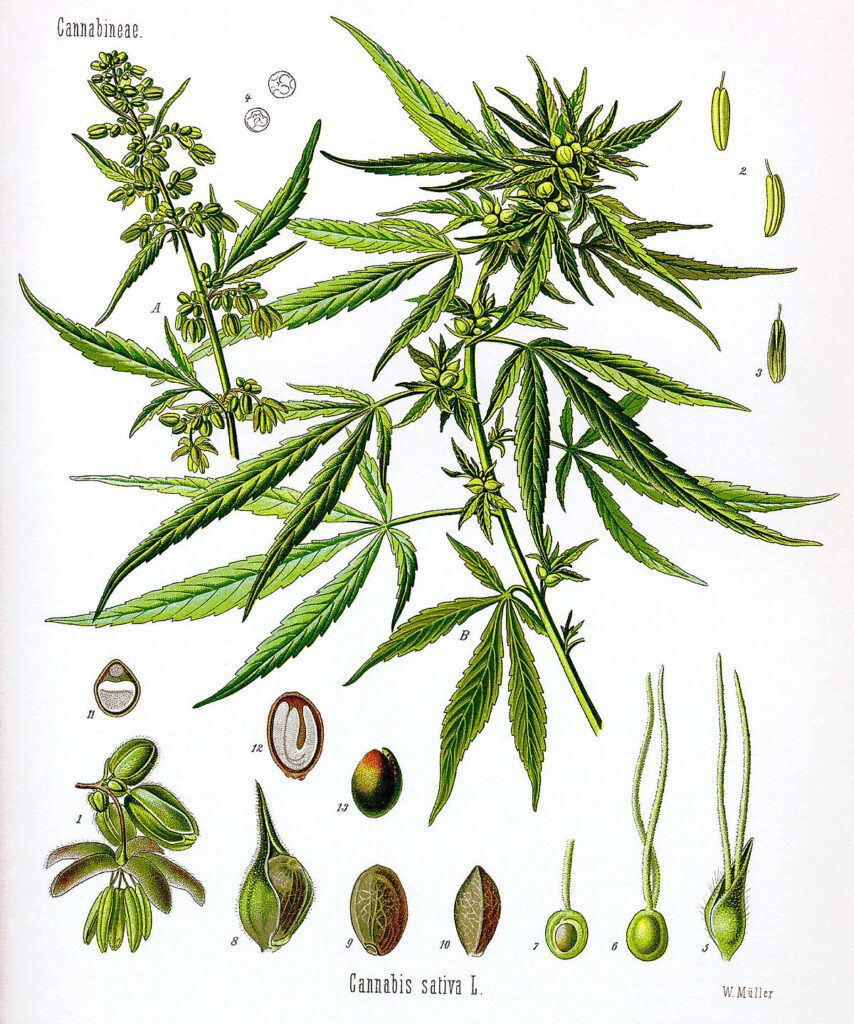
Examining the Water Retention Properties of Coco and Soil
When it comes to growing cannabis, one of the key factors that gardeners must consider is the water retention properties of the growing medium. In this section, we will examine the water retention properties of both coco and soil to provide growers with a better understanding of the differences between the two.
Coco, which is derived from coconut husks, is known for its excellent water retention capabilities. The fibrous nature of coco allows it to retain water while still allowing for proper drainage, ensuring that the roots have access to the moisture they need without becoming waterlogged. This can be particularly beneficial for gardeners who live in dry climates or those who may have difficulty maintaining consistent watering schedules.
In contrast, soil typically has lower water retention properties compared to coco. It is important to note, however, that the water retention capabilities of soil can vary depending on its composition, such as the amount of organic matter present and its texture. Clay soils, for example, tend to retain water more effectively than sandy soils. Gardeners using soil as a growing medium must carefully monitor moisture levels to prevent overwatering or under-watering, which can have negative effects on plant health.
Understanding the water retention properties of coco and soil is essential for cannabis growers to make informed decisions about their growing medium. By considering factors such as climate, watering habits, and the specific needs of their plants, gardeners can choose the most suitable option for their cannabis cultivation endeavors.
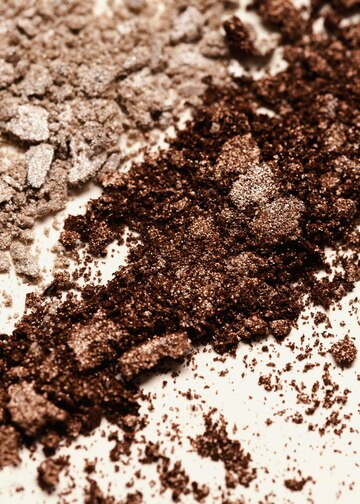
Analyzing the pH Levels in Coco and Soil for Cannabis Growth
pH levels play a crucial role in the overall health and development of cannabis plants. Both coco and soil mediums have different pH characteristics that can affect the availability of nutrients and impact plant growth.
In coco coir, the pH level tends to be slightly acidic, typically ranging from 5.5 to 6.5. This acidity is influenced by the characteristics of coco coir itself, as well as the way it is processed. Coco coir is often washed and buffered to remove excess salts and adjust the pH level, making it suitable for plant growth. However, it’s important to note that different brands of coco coir may have varying pH levels, so it’s essential to check the specific product’s pH specifications.
On the other hand, soil pH can vary depending on its composition and the presence of certain minerals. Ideally, the pH of soil for cannabis cultivation should fall within a slightly acidic to neutral range of 6.0 to 7.0. This pH range ensures that essential nutrients are readily absorbed by the roots. It’s worth noting that maintaining proper soil pH is crucial as extreme acidity or alkalinity can cause nutrient deficiencies or toxicities, leading to stunted growth or other plant health issues.
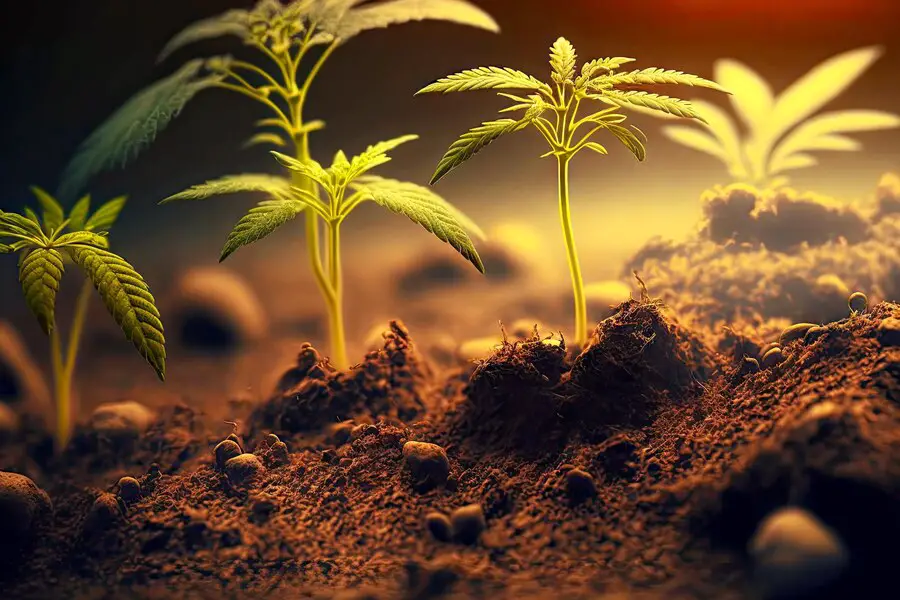
Evaluating the Drainage and Aeration in Coco and Soil
Drainage and aeration are crucial factors to consider when choosing a growing medium for cannabis cultivation. In both coco and soil, the ability of the medium to allow excess water to flow away and provide sufficient oxygen to the roots plays a significant role in the overall health and growth of the plants.
When it comes to drainage, coco has proven to be an excellent choice. Coco coir, derived from the fibrous husks of coconuts, has a naturally porous structure that allows for excellent water drainage. This means that excess water can easily escape, preventing the roots from being waterlogged, which can lead to root rot and other diseases. Additionally, coco coir retains a balanced moisture level, ensuring that the roots have access to water without being oversaturated.
On the other hand, traditional soil can vary in its drainage capabilities depending on its composition. Well-draining soil, enriched with organic matter, like compost, can provide adequate drainage for cannabis plants. However, heavy clay soils or those with poor drainage can hinder root development and lead to waterlogging. In such cases, growers may need to incorporate amendments like perlite or vermiculite to improve drainage.
When it comes to aeration, coco once again shines. The fibrous structure of coco coir allows for excellent air circulation around the roots. This is crucial, as oxygen is essential for healthy root development and the efficient uptake of nutrients. The porous nature of coco coir provides abundant oxygen, promoting strong and vigorous root growth.
In contrast, soil may have limitations in terms of aeration. Compacted soil or heavy clay can restrict the movement of air around the roots, which can hinder growth and lead to root suffocation. However, regular tilling or incorporating organic matter into the soil can help loosen it up, improving aeration.
In summary, both coco and soil have their advantages and considerations when it comes to drainage and aeration. Coco excels in providing excellent drainage and aeration, preventing waterlogged roots and promoting healthy growth. Soil, on the other hand, can be versatile but requires attention to ensure adequate drainage and aeration. Understanding the specific needs of the cannabis plants, as well as the condition of the growing environment, will help growers make an informed choice between coco and soil as their preferred growing medium.
Exploring the Environmental Impact of Coco and Soil in Cannabis Cultivation
Cannabis cultivation, like any other agricultural activity, has an environmental impact that cannot be ignored. The choice of growing medium, such as coco or soil, can play a significant role in determining the overall environmental footprint of cannabis cultivation.
When it comes to coco, one of the most significant environmental advantages is its sustainability. Coco is made from coconut husks, which are a byproduct of the coconut industry. By using coco as a growing medium, growers are effectively utilizing a waste material that would otherwise be discarded. Additionally, coco is a renewable resource that can be harvested without causing any harm to the environment. This makes it an eco-friendly choice for those who are concerned about minimizing their environmental impact.
On the other hand, soil is a natural and abundant resource that has been used for centuries in agriculture. It is rich in nutrients and provides a stable and well-balanced environment for plant growth. However, the environmental impact of using soil as a growing medium can vary depending on factors such as cultivation methods and soil management practices. Soil erosion, nutrient leaching, and depletion of soil fertility are some of the potential negative environmental consequences associated with traditional soil-based cultivation. Therefore, it is crucial for growers to adopt sustainable soil practices, such as crop rotation and organic fertilization, to mitigate these impacts and ensure long-term soil health.
In conclusion, both coco and soil have their environmental pros and cons in cannabis cultivation. While coco offers sustainability and waste reduction, soil provides a natural and nutrient-rich growing environment. Ultimately, the choice of growing medium should be based on a holistic evaluation of the specific environmental considerations and priorities of the grower. By embracing sustainable practices and optimizing resource usage, cannabis cultivators can minimize the environmental impact of their operations and contribute to a greener and more sustainable future.
Considering the Cost Factors of Using Coco and Soil as Growing Mediums
When it comes to choosing the right growing medium for your cannabis plants, cost is definitely a factor to consider. Both coco and soil have their own benefits and drawbacks, but understanding the cost factors associated with each option can help you make an informed decision.
In terms of upfront cost, coco coir tends to be more expensive than soil. This is mainly because coco coir is a processed and imported product, whereas soil is widely available and can often be sourced locally. However, it’s important to note that the initial cost difference may be offset by other factors such as yield and lifespan.
Another cost consideration is the need for additional amendments and fertilizers. Soil typically requires less input in terms of amendments, as it already contains nutrients that are gradually released to the plants. On the other hand, coco coir is an inert medium and needs to be supplemented with nutrients throughout the growing cycle. While this may increase the overall cost of using coco coir, it also provides the advantage of having more control over the nutrient levels and allows for precise feeding schedules.
In conclusion, when considering the cost factors of using coco and soil as growing mediums, it’s important to weigh the upfront cost, ongoing expenses for amendments and fertilizers, as well as the potential yield and lifespan of the medium. Ultimately, your decision should be based on your budget, preference, and the specific needs of your cannabis plants. It’s always a good idea to research and compare prices, and consult with experienced growers to find the most cost-effective solution for your cultivation goals.
Let’s compare the cost factors of using coco and soil as growing mediums. Both have their advantages and drawbacks, so understanding the cost implications can help you make an informed decision for your garden. Here’s a table summarizing the key points:
| Aspect | Coco Coir | Soil |
|---|---|---|
| Initial Cost | Coco coir can be more expensive than traditional soil, especially when purchased in large quantities. The cost may vary based on quality and sourcing. | Soil is generally more budget-friendly and widely available. |
| Long-Term Cost | While the initial investment may be higher, coco coir can be reused multiple times, potentially offsetting the cost over time. | Soil may require occasional amendments and replenishment, but it’s generally cost-effective. |
| Nutrient Availability | Coco coir acts as a sponge for nutrients, holding them within its structure. This enhances nutrient availability for plants. | Soil contains natural nutrients, but their availability may vary based on soil type and health. |
| Water Management | Coco coir has excellent water retention, which can be advantageous but also requires careful irrigation management to prevent overwatering. | Soil retains water but may need less frequent watering. Proper drainage is essential. |
| Environmental Impact | Coco coir is derived from coconut husks, making it an environmentally friendly choice. | Soil is natural but may involve mining or agricultural practices that impact ecosystems. |
Remember that your choice should align with your specific gardening needs, budget, and environmental considerations. Both coco coir and soil have their place, so choose wisely based on what works best for your plants!
Assessing the Ease of Use and Maintenance of Coco and Soil
Coco and soil are two popular growing mediums used in cannabis cultivation, each offering unique benefits and considerations when it comes to ease of use and maintenance. Let’s explore both options and delve into how they can affect your growing experience.
Coco, derived from the fibrous husks of coconuts, has gained popularity among growers for its excellent water retention capabilities while maintaining good drainage. This makes it easier to maintain the right moisture levels for your plants, reducing the risk of over or under watering. Additionally, coco is a lightweight medium that is easy to handle and store, making it a convenient choice for growers with limited space. However, using coco as a growing medium requires additional attention to pH levels and nutrient supplementation, as coco itself has a neutral pH and contains minimal nutrients. By monitoring and adjusting pH levels and providing the necessary nutrients, growers can ensure optimal plant growth and health in a coco medium.
On the other hand, soil remains a traditional and reliable choice for many cannabis cultivators. Soil contains an abundance of beneficial microorganisms and nutrients that naturally support plant growth. This makes it a beginner-friendly option, as the nutrients in the soil help sustain plants without requiring extensive monitoring or adjustment. Soil is also forgiving when it comes to pH fluctuations, making it easier for growers to maintain a stable environment for their cannabis plants. However, keep in mind that soil has varying compositions depending on the region, and quality can differ greatly. Therefore, ensuring you have access to high-quality soil or amending it with additional nutrients may be necessary for optimal results. Additionally, soil can be heavier than coco, which may impact portability and handling for those with limited mobility or space constraints.
In conclusion, both coco and soil have their own advantages and considerations when it comes to ease of use and maintenance in cannabis cultivation. Coco offers excellent water retention and convenience, but requires careful pH monitoring and nutrient supplementation. Soil, on the other hand, is beginner-friendly and contains natural nutrients, but may vary in quality and be heavier to handle. Understanding these factors and considering your own specific needs and preferences will help you make an informed decision in choosing the right growing medium for your cannabis garden.
Understanding the Role of Microorganisms in Coco and Soil for Cannabis Growth
Microorganisms play a crucial role in the growth and development of cannabis plants, whether they are grown in coco or soil. These microorganisms, including bacteria, fungi, and other beneficial microbes, form a symbiotic relationship with the plant’s roots, known as the rhizosphere.
In coco, microorganisms help break down organic matter and convert it into nutrients that are readily available for the plants to absorb. This process, known as mineralization, ensures that the plants receive a steady supply of essential elements. Microbes in coco also aid in the decomposition of dead root material, preventing the build-up of harmful pathogens and diseases. They also contribute to the overall health and vigor of the plant by enhancing root development and nutrient uptake.
In soil, microorganisms play a similar role in nutrient cycling. They break down organic matter and release nutrients that plants can readily use. Additionally, certain microorganisms in soil form beneficial relationships with plants, known as mycorrhizal associations. These mycorrhizal fungi form a symbiotic relationship with plant roots, extending their reach and increasing the plant’s ability to absorb nutrients and water from the soil. This mutually beneficial partnership between plants and microorganisms enhances the overall nutrient availability and resilience of the plant.
Overall, understanding the role of microorganisms in coco and soil for cannabis growth is essential for successful cultivation. By harnessing these beneficial microbes, growers can create a thriving growing environment that fosters healthy plant development and maximizes yield potential. Whether you choose to grow in coco or soil, ensuring the presence of these microorganisms and providing the necessary conditions for their growth and activity is vital for optimal cannabis cultivation.
Investigating the Potential Risks of Pests and Diseases in Coco and Soil
When it comes to cultivating cannabis, one of the key concerns for growers is the potential risks of pests and diseases. Both coco and soil can present their own set of challenges in this regard, and it is important to understand these risks in order to take appropriate preventative measures.
In coco cultivation, pests such as fungus gnats and spider mites can be a common problem. Coco coir, being an organic substance, can provide a suitable habitat for these pests to thrive. Additionally, if the coco coir is not properly sterilized or treated before use, it can harbor disease-causing pathogens that may affect the health of the plants. It is crucial for growers to monitor their coco medium regularly and take proactive steps to prevent and control any potential infestation or disease outbreak.
On the other hand, soil cultivation also poses its own pest and disease risks. Soil can harbor harmful bacteria, fungi, and nematodes that can cause root diseases and affect the overall health of the plants. Certain pests, such as soil-dwelling insects and weeds, can also be problematic in soil-based systems. It is essential for growers to maintain healthy soil conditions, practice good sanitation, and implement integrated pest management strategies to minimize the risks of pests and diseases in soil-based cultivation.
Overall, both coco and soil cultivation present unique challenges when it comes to pests and diseases. However, by being vigilant and taking proactive measures, growers can mitigate these risks and ensure a healthy and thriving cannabis crop. Stay tuned for practical tips and solutions to address these challenges in the upcoming sections.
Examining the Effects of Coco and Soil on Cannabis Plant Growth and Yield
When it comes to choosing a growing medium for cannabis cultivation, both coco and soil have their own unique effects on plant growth and yield. Understanding these effects can help growers make an informed decision based on their specific needs and preferences.
Coco, also known as coconut coir, has gained popularity as a growing medium in recent years. It is made from the fibrous husks of coconuts and offers several benefits for cannabis plants. Coco has a neutral pH level, which allows for easier nutrient absorption and uptake by the plants. It also has excellent water retention capabilities, ensuring that the plants receive a consistent water supply without becoming waterlogged. Additionally, coco has good drainage and aeration properties, promoting healthy root development and reducing the risk of root rot.
On the other hand, soil has long been a traditional choice for growing cannabis. It provides a rich and diverse ecosystem for plants, containing essential nutrients and beneficial microorganisms. Soil acts as a buffer, maintaining a stable pH level and preventing fluctuations that could harm the plants. Moreover, soil has natural water retention abilities, allowing for a balanced moisture level that supports plant growth. Its organic matter decomposes over time, providing a continuous supply of nutrients to the plants.
When comparing the effects of coco and soil on cannabis plant growth and yield, it is important to consider various factors such as the nutrient retention capabilities, water retention properties, drainage and aeration, pH levels, ease of use and maintenance, and environmental impact. It is also key to take into account personal preferences and experience as factors that may influence the choice between the two. By carefully weighing the pros and cons of each option, growers can select the most suitable growing medium to optimize the growth and yield of their cannabis plants.
Considering the Personal Preferences and Experience of Growers with Coco and Soil
When it comes to choosing a growing medium for cannabis cultivation, personal preferences and experiences of growers play a significant role. Some growers swear by coco as their go-to medium, while others believe in the tried-and-true method of using soil. It all comes down to individual preferences, growing styles, and the specific needs of the plants.
Growers who prefer coco often praise its excellent drainage properties and ability to hold the perfect amount of moisture for the plants. Coco, made from coconut husks, is lightweight and provides good aeration to the roots. It also has a neutral pH level, eliminating the need for pH adjustments during the cultivation process. Additionally, coco can be reused for multiple grows, making it a more sustainable choice.
On the other hand, soil has been used for centuries in plant cultivation, including cannabis. Many growers appreciate soil for its natural nutrient content and the diverse microbiome that it supports. Soil provides a stable environment for the roots and allows for extensive root development. It also offers a buffer against over or under watering, providing a forgiving nature for less-experienced growers. Furthermore, organic soil can contribute to the flavor profile and terpene production of the final harvest.
Ultimately, the choice between coco and soil comes down to the grower’s personal preferences and goals. Some may prioritize ease of use and low maintenance, while others value sustainability or flavor profiles. Experimentation, trial and error, and personal experience will help growers determine their ideal growing medium. However, it’s essential to keep in mind that both coco and soil have their pros and cons, and what works for one grower may not yield the same results for another.
Summarizing the Key Factors to Consider When Choosing Between Coco and Soil for Cannabis
When choosing between coco and soil as growing mediums for cannabis, there are several key factors to consider. First and foremost, it’s important to understand the specific needs of your cannabis plants and how each medium can meet those needs. Coco, which is made from the fibrous husk of coconuts, offers excellent water retention properties and allows for greater control over nutrient uptake. On the other hand, soil provides a more natural environment for plant growth and can help support the development of beneficial microorganisms.
Another factor to consider is the level of maintenance and ease of use. Coco requires more frequent watering and nutrient supplementation, as it has a lower water retention capacity compared to soil. However, soil can be more forgiving for beginner growers, as it provides a buffer for nutrient imbalances and requires less frequent monitoring. Additionally, the choice between coco and soil may also depend on environmental factors. Coco is a more sustainable option, as it is derived from a renewable resource, while soil cultivation can have a greater impact on land use and degradation.
In conclusion, the decision between coco and soil as growing mediums for cannabis should be based on a thorough understanding of the specific needs of your plants, your level of expertise, and the environmental implications. Coco offers precise control over nutrient and water uptake, while soil provides a more natural growing environment. Consider your maintenance preferences, environmental concerns, and long-term goals to make an informed choice that will optimize the growth and yield of your cannabis plants.
Please do watch video and know more information.
What is coco and why is it a popular growing medium for cannabis?
Coco, also known as coco coir, is a natural fiber derived from the husk of coconuts. It is a popular growing medium for cannabis because it is lightweight, has excellent water retention capabilities, and provides good aeration for the roots.
Can coco be reused for multiple cannabis grows?
Yes, coco can be reused for multiple grows. However, it is important to properly clean and sterilize the coco before reusing it to prevent any potential pests or diseases from affecting the new crop.
How does soil compare to coco in terms of nutrient retention?
Soil has greater nutrient retention capabilities compared to coco. Soil contains natural organic matter that can hold onto nutrients and release them slowly over time, providing a steady supply of nutrients to the cannabis plants.
Is coco or soil better for beginner growers?
Both coco and soil can be suitable for beginner growers. However, coco may require more precise control of watering and nutrient application, whereas soil is generally more forgiving and easier to manage for beginners.
Can coco or soil affect the taste and flavor of cannabis buds?
Yes, both coco and soil can have an impact on the taste and flavor of cannabis buds. Coco tends to produce a cleaner and more neutral flavor profile, while soil-grown cannabis can have a richer and earthier taste.
Do coco and soil have different environmental impacts?
Coco is considered a more sustainable and environmentally friendly option compared to soil. Coco is a renewable resource, whereas soil often requires extensive mining and extraction processes. Additionally, coco production generates less waste and has a smaller carbon footprint.
How do microorganisms contribute to cannabis growth in coco and soil?
Both coco and soil contain beneficial microorganisms that aid in nutrient cycling and plant growth. These microorganisms break down organic matter and make nutrients more available to the cannabis plants. However, coco may require the addition of beneficial microbes through supplements, while soil naturally harbors a diverse microbial community.
Are there any specific pest and disease risks associated with coco or soil?
Coco is generally considered to have fewer pest and disease risks compared to soil. Soil can harbor pests and diseases that may affect cannabis plants, while coco is more resistant to such issues. However, proper sterilization and hygiene practices are essential in both growing mediums to minimize these risks.
Which growing medium, coco or soil, typically results in higher cannabis yields?
Both coco and soil can produce high cannabis yields when properly managed. The choice between the two depends on various factors such as grower experience, nutrient management, and environmental conditions.
Can coco or soil be mixed together as a growing medium?
Yes, coco and soil can be mixed together to create a growing medium that combines the benefits of both. This blend can improve water retention, nutrient availability, and overall plant health. However, it is important to maintain the proper balance of coco and soil to avoid any adverse effects on the plants.

Nicole Burke is a dynamic writer at SouthElMonteHydroponics, fueled by her passion for horticulture and environmental sustainability. Armed with a degree in Environmental Science from a renowned institution, Nicole’s expertise lies in hydroponic gardening, organic farming, and biodiversity conservation. Her insatiable curiosity and love for nature drive her to explore innovative techniques in hydroponics, seeking to revolutionize the way we grow crops in urban environments. Nicole’s writing reflects her deep commitment to promoting eco-conscious practices and fostering a deeper connection between humans and the natural world. Through her engaging storytelling, she inspires others to embrace sustainable living and harness the power of hydroponics for a greener future.

